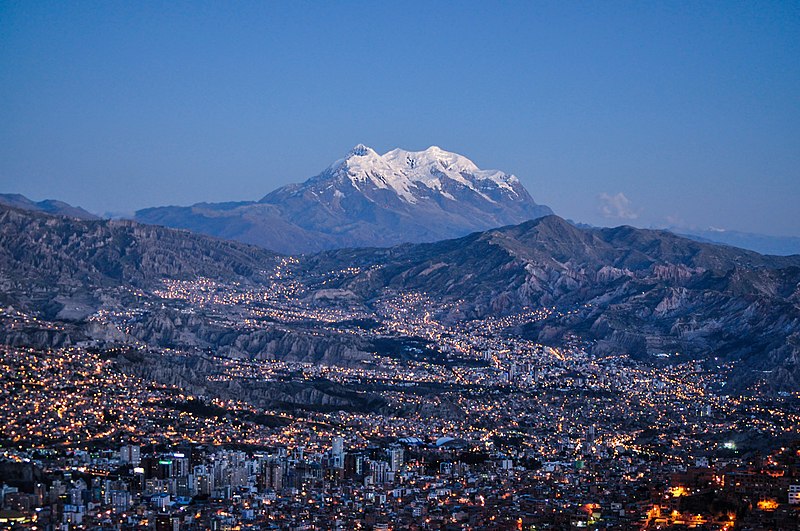Have you ever wondered why your breath hitches a bit when you first step off the plane in Mexico City? It’s not just the city’s vibrant culture taking your breath away, but also its surprising altitude. Known as CDMX (Ciudad de México), this bustling metropolis isn’t just high on energy, it’s also high above sea level.
Nestled in the Valley of Mexico, CDMX sits at an impressive altitude, dwarfing many well-known ‘high’ cities. This unique geographical feature has a significant impact on everything from the city’s climate to its cuisine. So, whether you’re planning a trip or just curious, understanding CDMX’s altitude can offer a fascinating insight into life in Mexico’s capital.
Is Mexico City considered high altitude?
Yes, Mexico City is considered a high-altitude city. It sits at an elevation of around 2,250 meters (7,380 feet) above sea level.
Why is Mexico City so high?
Mexico City is so high because it is located in the Valley of Mexico, which is a high-altitude basin in the central part of the country. The city was built on the ruins of the Aztec capital Tenochtitlan.
Why am I so tired in Mexico City?
You may feel tired in Mexico City due to the lower oxygen levels at high altitudes. The reduced air pressure can make it more difficult for your body to get the oxygen it needs, leading to fatigue and other altitude-related symptoms.
What is the highest city in Mexico?
The highest city in Mexico is Cerro de Pasco, located in the Andes mountains of Peru at an elevation of 4,380 meters (14,340 feet) above sea level.
Understanding CDMX Altitude
You’re now diving deeper into the distinct altitude of Mexico City. Armed with the right information, you can better appreciate how this high altitude contributes to the city’s unique charm. Mexico City’s elevation, standing at over 2,250 meters (7,382 feet) above sea level, ranks it among the highest major cities globally, highlighting its significant altitude in comparison to other major cities around the world.
The Basics of Altitude Measurement
Altitude refers to the height above a specific geographical point, usually measured from sea level. It’s expressed in feet or meters, with 1 meter equal to 3.281 feet. For example, if a place is 2,000 meters above sea level, its altitude, in feet, is approximately 6,562.
Measuring altitude involves the use of barometric pressure. Air pressure decreases with increasing altitude. So, a barometer accurately records these changes, converting the data into equivalent altitude units. However, remember that atmospheric conditions like temperature and humidity can influence the accuracy of these measurements.
Properly understanding altitude figures gives you a more concrete idea of a city’s location and environment. Additionally, altitude influences the city’s climate, offering insights into daily weather conditions and seasonal variations.
In the case of Mexico City, also known as CDMX, its notable high altitude shapes both its physical features and its cultural character. The city stands impressively at about 2,250 meters above sea level, making it one of the highest capital cities in the world. Its altitude uniquely impacts the various aspects of life in the city, from its climate to its cuisine.
How CDMX Altitude Affects Visitors
High above sea level, Mexico City, or CDMX as it’s widely known, sits imposingly at an altitude of approximately 2,250 meters, making altitude sickness in Mexico a prevalent issue among visitors. The unique elevation leads to sickness in Mexico City, affecting a multitude of factors, including your personal comfort, health, and the activities you can enjoy during your stay.
Visitors to CDMX may experience a range of altitude sickness symptoms, including the common altitude sickness symptoms of headaches, dizziness, nausea, and fatigue. These common symptoms are a direct result of the city’s high elevation, reduced oxygen levels, and poor air quality and you’ll notice them most while on a walking tour or taking the stairs.
Upon arrival, visitors might immediately experience altitude sickness, feeling overwhelmed by the sudden change in altitude and its accompanying discomforts. Mexico City altitude sickness presents specific challenges due to the city’s high elevation.
To prevent altitude sickness, it’s advisable to consult healthcare providers before your trip to discuss suitable medications and strategies. Available treatments to treat altitude sickness include over-the-counter medications, supplements like Ginko biloba, and products designed to alleviate symptoms, ensuring a more comfortable stay in CDMX.
Acclimatizing to CDMX Altitude
Upon reaching CDMX, you might feel the effects of altitude quite swiftly. Some individuals experience differing levels of altitude sickness. Mild symptoms often include headaches, fatigue, shortness of breath, and nausea. You’re advised to acclimatize slowly over a period of two to three days, limiting strenuous activity and consuming plenty of fluids.
Altitude plays a role in physical exertion too. It makes activities like hiking, climbing, or other outdoor ventures more challenging. Oxygen levels decrease as altitude increases, thus your body may take longer to recover from physical exertion.
The food and beverages in CDMX also respond to altitude. Baking, for instance, demands adjustments in time, measurement, and temperature. You’ll notice that the water boils at a lower temperature and the alcohol may affect you faster due to the altitude.
Always remember, each individual’s response to altitude can differ significantly. It’s advisable to consult with your healthcare provider before a trip to high-altitude areas like CDMX.
Health Implications of Mexico City Altitude Sickness
The high-altitude environment of CDMX could lead to significant health implications for visitors. Altitude sickness, also known as acute mountain sickness, affects many. If altitude sickness strikes, symptoms range from mild, resembling a hangover, to severe like High Altitude Pulmonary Edema (HAPE) or High Altitude Cerebral Edema (HACE), both life-threatening conditions.
While mild symptoms often alleviate with rest and hydration, severe cases demand prompt medical attention. Over-the-counter medications exist to combat minor symptoms, but professional medical advice is essential before you consume them.
Moreover, those with pre-existing medical conditions need caution. Conditions such as cardiovascular diseases, lower lung capacity, and pregnancy can exacerbate the effects of altitude. Seeking a doctor’s advice before the journey to CDMX is paramount.
The Environmental Impact of CDMX Altitude
At an elevation of about 2,250 meters, Mexico City’s height above sea level plays a significant role in shaping its climate. This altitude brings about a subtropical highland climate, characterized by mild summers, cool winters, and substantial rainfall during the summer months. However, this elevation also results in more extreme variations.
For instance, the city sees more frequent hailstorms, a meteorological occurrence more common at high altitudes. Because air pressure decreases with altitude, the city’s high elevation results in lower atmospheric pressure. This aspect means more radiant energy from the sun, leading to a higher risk of sunburns and other solar radiation-related issues.
CDMX Altitude and Its Effect on Flora and Fauna
Mexico City’s altitude greatly influences the biodiversity within its boundaries. At these heights, the city supports a blend of temperate and subtropical species. For example, the pines and oaks of the temperate zone coexist with the palms and ferns of the subtropical realm.
Specifically, the high altitude supports the growth of pine-oak forests, a unique ecosystem home to various bird species, including the endemic Transvolcanic jay and the Bumblebee Hummingbird. Similarly, the fauna also adapts to high-altitude conditions. Rabbits, skunks, and even endemic species like the Volcano Rabbit, thrive in these places, showcasing the city’s rich biodiversity shaped by its height.
How CDMX Altitude Determines Lifestyle and Culture
CDMX, standing 2,250 meters above sea level, forges an exclusive character in the city’s lifestyle and culture. You’ll find this trait imprinted in numerous facets of Mexico City life.
- Outdoor Activities– The city’s altitudinal nature invites outdoor enthusiasts for unique experiences. Hikers, for instance, can scale surrounding mountains like Iztaccihuatl and Popocatepetl, creating a culture that appreciates outdoor activities.
- Health Awareness– Living at such a height nurtures a health-conscious society. The city’s residents are astutely aware of the effects of altitude on health, such as oxygen deprivation, leading to a higher prevalence of health and fitness activities.
- Architectural Practices– The city’s structuring takes into account its high-altitude location, ensuring buildings and other structures can withstand altitude-triggered climatic conditions. Look around, and you’ll see evidence of architectural ingenuity fused with altitude acclimation.
Capitalize on your understanding of how CDMX’s altitude dictates the city’s lifestyle and culture, and move on to another exciting manifestation of it: its cuisine.
High-Altitude Cuisine: The Culinary Influence of CDMX Altitude
Altitude equally tugged the strings when it came to Mexico City’s culinary scene. Surprising, yet apt, CDMX’s food exhibits altitude-influenced traits in the following ways.
- Unique Flora and Fauna– CDMX’s altitude makes home to a range of plant and animal species, like the endemic Transvolcanic Jay and Volcano Rabbit. This biodiversity directly impacts what lands on the city’s plates, offering a unique gustatory experience.
- Cooking Adjustments– Cooking at high altitudes requires technique adjustments. Boiling point lowers, altering the way food is cooked. This shift necessitates specific culinary practices, innovating CDMX’s cooking methods over the years.
- Alcohol Consumption– The city’s height not only affects alcohol consumption, making drinkers feel the effects faster due to decreased oxygen levels, but also emphasizes the importance of moderating alcohol intake. At high altitudes, alcohol can worsen altitude sickness symptoms, dehydrate the body, and hinder the acclimatization process. This facet significantly influences Mexico City’s drinking culture, often balanced with well-devised local remedies.
While the city’s altitude sometimes poses challenges, it equally births a unique culinary landscape. One trip to a local food market reveals the deep imprint of altitude on CDMX’s gastronomic culture.
The Role of CDMX Altitude in Sports and Outdoor Activities
Building on the factors discussed earlier, the altitude of Mexico City, known as CDMX, has a distinct impact on sports and outdoor activities. This altitude influence extends from simple outdoor fun to professionally competitive athletics.
Training at High Altitude: Advantages and Challenges
Training in high altitude conditions, like those found in CDMX, provides athletes with some significant benefits. High altitude training produces an increase in red blood cells, the body’s oxygen carriers, leading to enhanced physical performance. On the flip side, the thin air at CDMX’s altitude can pose challenges such as exertion-induced headaches and shortness of breath.
However, gradual acclimatization mitigates these symptoms, allowing athletes to take full advantage of high-altitude training benefits. So, while it might be initially challenging, training at CDMX’s high altitudes ultimately adds to athlete performance significantly.
Popular High-Altitude Outdoor Activities in CDMX
The altitude in CDMX provides an ideal environment for various outdoor activities. Trekking and bird-watching in the Desierto de los Leones or Chipinque parks are enriching experiences unique to the city.
Hiking on Ajusco Mountain, a dormant volcano, provides spectacular views of the city and a sudden burst of adrenaline. Another adrenaline-pumping activity is paragliding at Valle de Bravo. Here, bird’s-eye views of the city reward those who dare to defy their fear of heights. As such, CDMX has an array of outdoor activities to offer, each accentuated by its unique altitude.


Comments are closed.